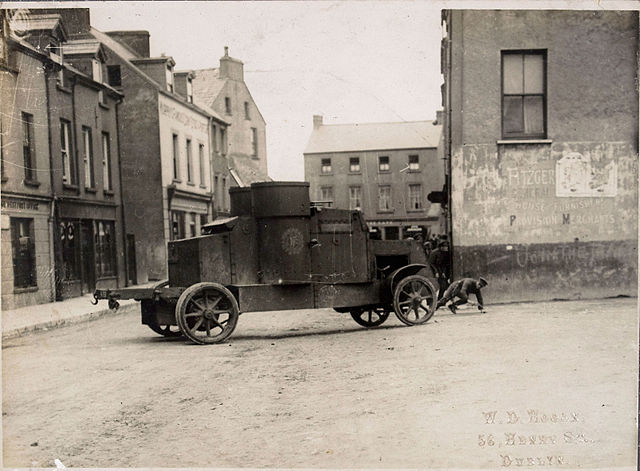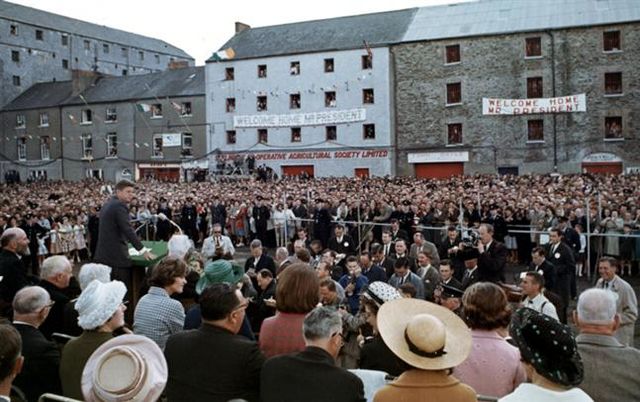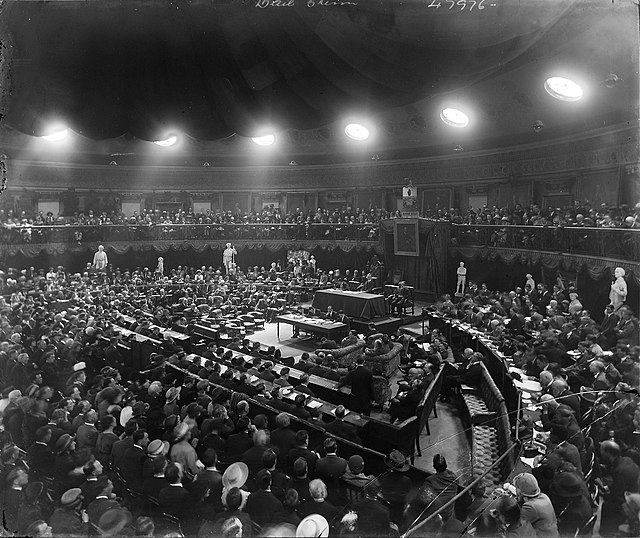History of the Republic of Ireland
The Irish state came into being in 1919 as the 32 county Irish Republic. In 1922, having seceded from the United Kingdom of Great Britain and Ireland under the Anglo-Irish Treaty, it became the Irish Free State. It comprised 26 counties with 6 counties under the control of Unionists which became Northern Ireland in 1921. Bunreacht na hÉireann 1937 constitution renamed the 26 states 'Ireland'. In 1949, only 26 counties explicitly became a republic under the terms of the Republic of Ireland Act 1948, definitively ending its tenuous membership of the British Commonwealth. In 1973 the Republic of Ireland joined the European Communities (EC) as a member state which would later become the European Union (EU).
A National Army Peerless armoured car in Passage West, August 1922
U.S. president John F. Kennedy addresses the people of New Ross, 27 June 1963
The Spire of Dublin symbolises the modernisation and growing prosperity of Ireland.
Dáil Éireann (Irish Republic)
Dáil Éireann, also called the Revolutionary Dáil, was the revolutionary, unicameral parliament of the Irish Republic from 1919 to 1922. The Dáil was first formed on 21 January 1919 in Dublin by 69 Sinn Féin MPs elected in the 1918 United Kingdom general election, who had won 73 seats of the 105 seats in Ireland, with four party candidates elected for two constituencies. Their manifesto refused to recognise the British parliament at Westminster and instead established an independent legislature in Dublin. The convention of the First Dáil coincided with the beginning of the War of Independence.
Dáil Éireann (Irish Republic)




